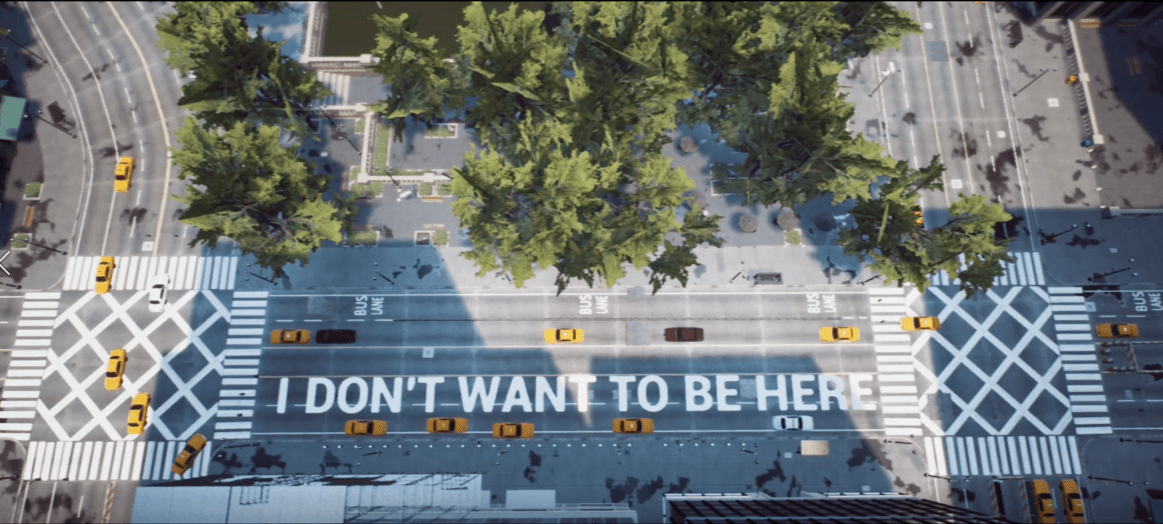Integrative Studio 2 : Visual Culture – Bridge #1
City life characteristically holds a wide array of instances that may be intriguing to different kinds of people. Some of the attractive features about cities include the beautiful architectural designs, large populations that translate to interactions with people of different personalities and backgrounds, active nightlife and the general hype characteristic of most cities. The type of environment characteristic of most cities is appealing not just to the youth but also to adults and even the aged. For all the activity experienced in cities, there is an element of alienation that can’t escape the eye to anyone who looks past the constant buzzing. Everyone is busy with their own lives even in a group setting. New York City (NYC) is a perfect example of experience in the city. It is among the most densely populated counties in the USA. NYC has some factors that enable loneliness which is harmful to an individual’s health.
Individuals are under the constant need to maintain their personality and individuality against the pressure of society and forces from without themselves. Imagine moving into NYC for the first time, getting an apartment and since you have no relatives, starting life on your own. Such is the story behind many New Yorkers. Statistics show that a single resident inhabits most real estate in NYC. Single individual residential apartments make up almost fifty percent of the total apartments in the city. These statistics are proof of the high number of people living by themselves within the city. However, the simple fact that one is living by themselves does not necessarily make one lonely; it, however, increases the propensity towards feelings of loneliness since human beings are, in essence, social creatures. Coupling this high number of people living on their own with the other factors that follow below contributes towards making the city one of the loneliest places to live.
The nature of cities in itself contributes a great deal towards social alienation and loneliness. People move to the city for many reasons, with the common purpose being to work. For this reason, most city dwellers are people running on routines and deadlines. You meet someone in the streets, and they are running for a meeting or something similar. Thousands of people meet at the train stations, board the same train, sit in the same coach but rarely exchange a word. One is thinking about how they have bills to settle, the other is thinking about work they are yet to complete and are supposed to hand in the following morning and so forth. The dynamic and fast-paced nature of cities leaves very little room for interaction hence at the end of the day when one finally stops, the stress of the day and loneliness set in as they sip their evening coffee on their lonesome.
In such a high and densely populated city, it is hard to get to know people in detail for some reasons. First is the fact that like most developed places, NYC dwellers have adopted the use of technology to the fullest. Instead of going out to get a cup of coffee one would rather have it delivered to them at their office. Even in the streets, most people are usually on their phones leaving little room for real-life physical interaction. Another reason why getting to know people in depth is difficult is the dynamic nature of city life. It is common to meet someone in the streets (intentionally or unintentionally) and strike a conversation due to the circumstances at the time but never lay your eyes on the individual ever again. One might thus meet new people every single day and chat with these people but these sporadic conversations are only transitional and once people part that is it. One has many ‘friends’ but no one they can claim to know at a personal level. Thus the loneliness disguised in the active party life adopted by most city dwellers.
In many ways, city life exposes people to the risk of feeling lonely. From a medical perspective, loneliness has several physical and psychological consequences. The most significant effect is that it predisposes individuals to depression. Depression limits a person’s ability to engage with others and also predisposes them to suicidal thoughts in extreme cases. Of late, NYC has seen a rise in reports of increasing rates of suicides. While this may not be directly attributable to loneliness, it is likely that it is partially responsible. Socially isolated and lonely people are also at a higher risk of developing cardiovascular problems and mental disorders due to higher stress levels. Hence, from a medical point of view, loneliness is bad for both physical and mental health.
The high number of single occupant households, busy city life and the dynamic nature of interactions among people in the city make NYC residents likely to experience loneliness. Feelings of loneliness translate to adverse physical and emotional health as evidenced by the increase in suicides experienced in NYC. Although the city provides a suitable environment in which one can grow their career and make a living, it also creates an enabling environment that predisposes many of its residents to feel lonely and the adverse health effects that follow such feelings.
